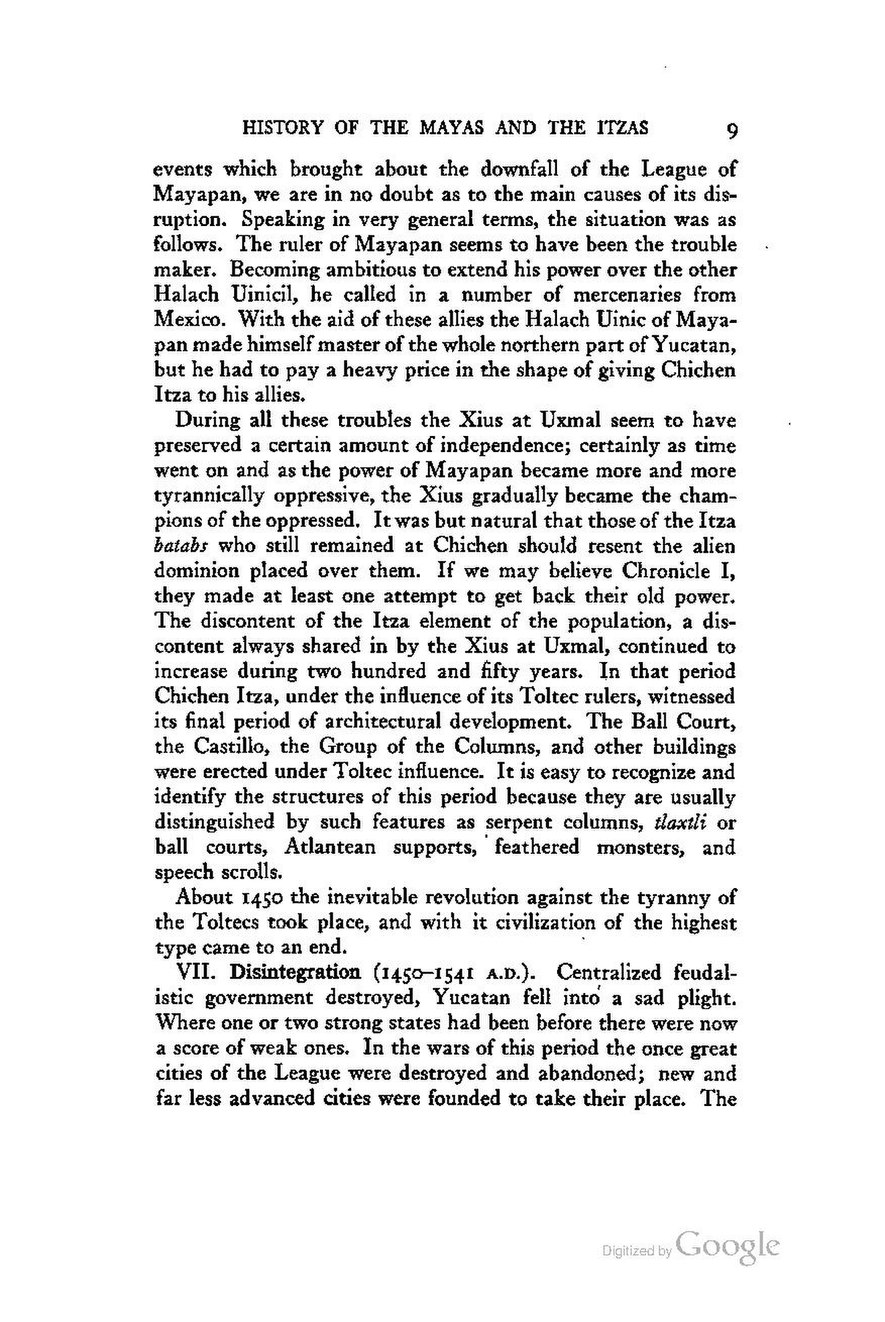events which brought about the downfall of the League of Mayapan, we are in no doubt as to the main causes of its disruption. Speaking in very general terms, the situation was as follows. The ruler of Mayapan seems to have been the trouble maker. Becoming ambitious to extend his power over the other Halach Uinicil, he called in a number of mercenaries from Mexico. With the aid of these allies the Halach Uinic of Mayapan made himself master of the whole northern part of Yucatan, but he had to pay a heavy price in the shape of giving Chichen Itza to his allies.
During all these troubles the Xius at Uxmal seem to have preserved a certain amount of independence; certainly as time went on and as the power of Mayapan became more and more tyrannically oppressive, the Xius gradually became the champions of the oppressed. It was but natural that those of the Itza batabs who still remained at Chichen should resent the alien dominion placed over them. If we may believe Chronicle I, they made at least one attempt to get back their old power. The discontent of the Itza element of the population, a discontent always shared in by the Xius at Uxmal, continued to increase during two hundred and fifty years. In that period Chichen Itza, under the influence of its Toltec rulers, witnessed its final period of architectural development. The Ball Court, the Castillo, the Group of the Columns, and other buildings were erected under Toltec influence. It is easy to recognize and identify the structures of this period because they are usually distinguished by such features as serpent columns, tlaxtli or ball courts, Atlantean supports, feathered monsters, and speech scrolls.
About 1450 the inevitable revolution against the tyranny of the Toltecs took place, and with it civilization of the highest type came to an end.
VII. Disintegration (1450-1541 A.D.). Centralized feudalistic government destroyed, Yucatan fell into a sad plight. Where one or two strong states had been before there were now a score of weak ones. In the wars of this period the once great cities of the League were destroyed and abandoned; new and far less advanced cities were founded to take their place. The
